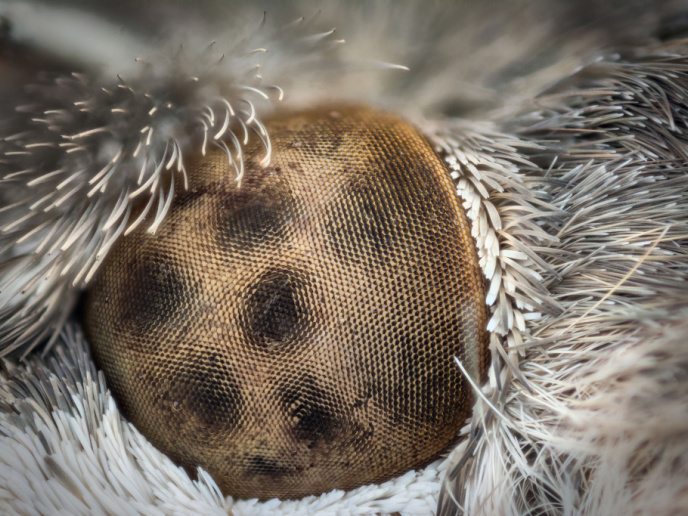To keep smartphones easy to see on sunny days, researchers look to moth eyes
Appearances aside, moths (the ugly cousins of butterflies) have something extraordinary: their eyes. They don’t reflect. Unique sub-wavelength structures cover their eyes which can minimise light reflection. Inspired by the anti-reflective nanostructures that cover moth eyes, researchers have developed a novel and cost-effective platform for upscaling the fabrication of sub-wavelength nanostructures across large and non-planar surfaces. “It’s amazing how nature is using nanostructures,” says Parvaneh Mokarian, coordinator of the EU-funded SUN-PILOT project. Taking inspiration from nature may have been the easiest part of the project. The challenge was to design and develop a clean, sustainable and cost-efficient nano-patterning technology and appropriate materials, that can be scaled up, for optical component users and automotive partners. “Our project is about an alternative technology for a variety of applications,” explains Mokarian, who is a research associate professor at the School of Chemistry and Advanced Material and BioEngineering Research Centre (AMBER) in Trinity College Dublin, which is funded by the Science Foundation Ireland. “Even though there are different techniques out there for the fabrication of these novel patterns, a lot of these technologies have their limits. For example, in lithography techniques, it’s not possible to go towards smaller scales because of the resolution of the light or electrons. Also, if you want to create these novel patterns on a larger scale and curved surfaces, it's going to be very expensive.”
From optics to automotive and beyond
Imagine a world where smartphone screens do not reflect ambient sunlight? What if vehicle dashboards could clean themselves? It’s all possible with the use of sub-wavelength nanotexturing. With this in mind, the SUN-PILOT project progressed along two lines. The first encircled the optics industry which is developing anti-reflective surfaces. “This is the technology used so you can see the display on your smartphone without the glare,” she says. “Nanopattern structures are one alternative to coating.” The second is the automotive industry for injection moulding of plastic parts. It is also interested in an alternative to coatings for anti-reflection screens, colourful plastic parts by structural colouring and anti-fingerprint structures. “From the very first day, we knew that this would be an extremely challenging project,” says Mokarian. “SUN-PILOT was not a normal incremental project.” Eleven partners from six European countries achieved two things. Firstly, they delivered a disruptive technology at pilot level to boost the performance and cost ratio of devices for the optics industry. It did so by piloting fabrication of scratch and wear resistant nanopatterned antireflective optical surfaces. Secondly, the automotive industry benefited from optimising a process and additive materials, applicable on moulds made by any nanopatterning method, for injection moulding to produce functional surfaces at lower cost than existing lamination methods. Our life cycle analysis also shows SUN-PILOT nanopatterning technique is greener than conventional coating methods for both optics and automotive industry. Looking ahead, Mokarian notes that the number of industries and potential applications is expected to increase alongside the growth of the touchscreen display market. In terms of future and potential applications, the sky is the limit. For example future cars are going to be autonomous with many sensors on them. Nanopatterning can increase the sensitivity of the sensors. “There is a lot of interest in this project,” says Mokarian. “For instance, large companies that work on screens, or injection moulding of plastic parts, are all interested. But nobody has yet nailed a fully utilised nanopatterning technique appropriate for mass production and industrial use. There are a lot of small companies working on different techniques to address this problem. We are just at the beginning.”







